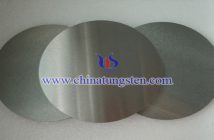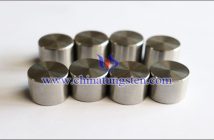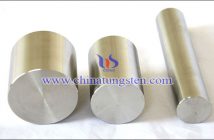Tungsten Trioxide is widely used in many fields due to its catalytic, optical and electrical properties.According to different application fields, the selection of preparation methods is different.Commonly used preparation methods of Tungsten Trioxide include hydrothermal synthesis method, sol-gel method, precipitation method, template method, gas-liquid reaction method and microemulsion method.In actual production practice, we should choose the appropriate preparation methods flexibly according to the advantages and disadvantages of each method.

1.Hydrothermal synthesis method
Hydrothermal reaction process refers to the general name of chemical reaction in water, water solution or steam at a certain temperature and pressure.
Advantages:
(1) It can reduce the step of converting metal or its precursor into oxide by calcination in general liquid phase synthesis;
(2) It can effectively control the particle size, particle size distribution and morphology of powder;
(3) It can greatly reduce or even avoid the formation of hard agglomeration;
(4) The prepared Tungsten Trioxide powder has the characteristics of complete grain development, small grain size, uniform distribution and good dispersibility.
Disadvantages:
(1) Poor safety performance;
(2) It is carried out in a closed container, and the growth process cannot be observed, which is not intuitive;
(3) High equipment requirements (high temperature and high pressure resistant steel and corrosion resistant lining), high technical difficulty (strict temperature and pressure control) and high cost.
2.The sol-gel method
Sol-gel method is a method that metal organic compounds, metal inorganic compounds or their mixture are solidified by solution, sol and gel, and then heat treated to form Tungsten Trioxide.
Advantages:
(1)Preparation parameters can be easily adjusted and controlled, so that Tungsten Trioxide with controllable physicochemical properties can be obtained;
(2) The obtained Tungsten Trioxide powder has small particle size, good uniformity and high purity, and is easy for industrial production.
Disadvantages:
(1)It is difficult to control the transformation of sol-gel;
(2)The product is easy to form hard agglomeration after drying;
(3)The synthesis period is longer.

3.Precipitation method
Precipitation method refers to adding a solvent which is miscible with the solution into the solution of mixed components, and changing the solubility of some components in the solution of mixed components by changing the polarity of the solvent, so as to precipitate them from the solution.
Advantages:
(1)Tungsten Trioxide powder with uniform chemical composition can be directly obtained through various chemical reactions in solution;
(2)The crystal of Tungsten Trioxide powder tends to be complete, with uniform particle size distribution and small particle size;
(3)It has the characteristics of simple process, low calcination temperature and time, and good product performance.
Disadvantages: The prepared powder is easy to agglomerate, which is not conducive to detection.
4.The template method
Template method is an important method to control the morphology and size of crystal. Usually, porous materials with nanometer pore size are used as templates, and related materials are deposited into the pores or surfaces of the templates by physical or chemical methods, and then the templates are removed, so as to obtain nano-materials with standardized morphology and size of templates.
Advantages: Simple method, high repetition rate, good predictability, uniform product shape and stable performance.
Disadvantages: The cost of template agent is relatively high.
5.Gas-liquid reaction method
Gas-liquid reaction refers to the method of introducing gas into salt solution to obtain the precipitate of precursor, and then drying the precipitate to form ultrafine powder.
Advantages:
(1)Good safety performance;
(2)That prepare Tungsten Trioxide powder has small size and good dispersity.
Disadvantages: There are complicated processes and long time.
6.Microemulsion method
Microemulsion is usually composed of surfactant, cosurfactant, solvent and water (or aqueous solution). In this system, two immiscible continuous media are divided into tiny spaces by surfactant amphiphilic molecules to form a microreactor, the size of which can be controlled in the nanometer range, and the reactants react in the system to form solid particles.
Advantages:
(1)The obtained powder does not need to be heated;
(2)The experimental device is simple and easy to operate;
(3)Controllable particle size.
Disadvantages:
(1)High cost;
(2)Slight agglomeration.
These preparation methods of Tungsten Trioxide have their own advantages and disadvantages. It is believed that with the deepening of research, there will be more time-consuming, simple and safe methods for preparing Tungsten Trioxide.



